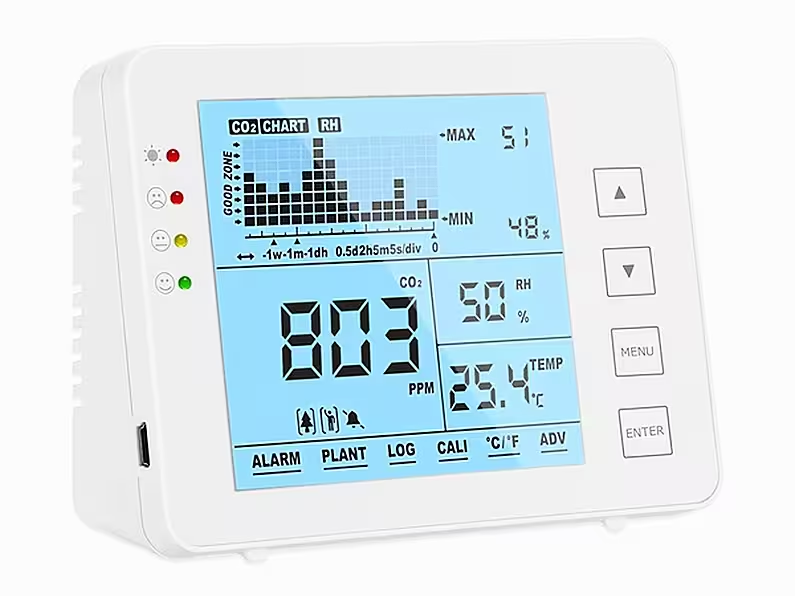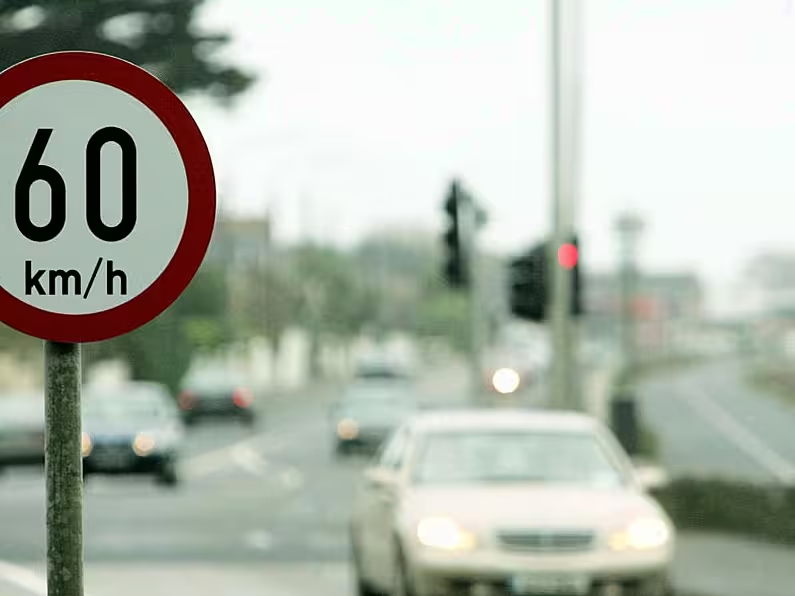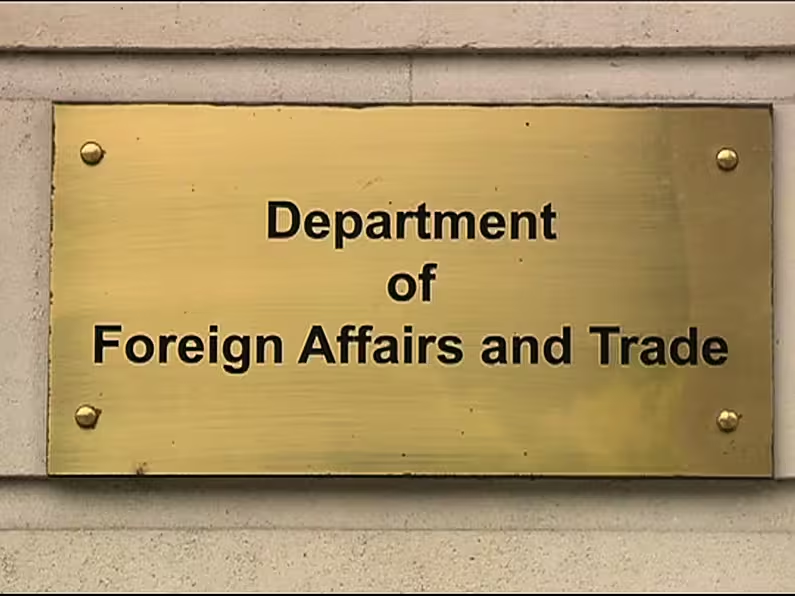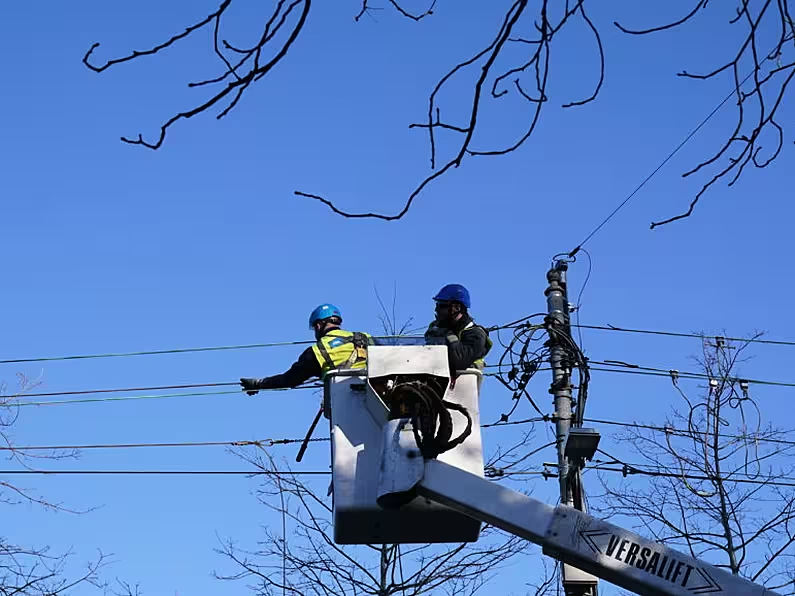James Cox
Experts have encouraged businesses to look into getting CO2 monitors ahead of the reopening of indoor services as a cost-effective means of improving ventilation.
The return of indoor hospitality has been pushed back from July 5th to at least July 19th, leading to fury and dismay among publicans, restaurateurs and the public.
The Government is looking into a 'corona pass' to allow vaccinated customers to return but measures such as social distancing, face masks where possible and ventilation will remain in place.
While the last thing businesses need is additional costs at this time, CO2 monitors come as cheap as €100 and can go a great way towards improving the flow of fresh air in indoor spaces.
Delta variant
Assistant Professor of Virology at Trinity College, Kim Roberts, told BreakingNews.ie: “We’re under-utilising ventilation at the moment in my opinion and as we re-strategise to try and get the Delta variant under control, using ventilation should be a key component of that. With any indoor space we need to be thinking about the airflow and making sure there are adequate ventilations.
“One easy way of measuring how good ventilation is in a building is by using carbon dioxide monitors. They are relatively inexpensive and very easy to use. They don’t measure the infection risk, but they work as a proxy to say how much ventilation is taking place within a space, how much fresh air is moving through, so CO2 monitors measure how much carbon dioxide is in the enclosed space.”
Dr Roberts recently demonstrated the benefits of CO2 monitors at Tropical Popical, a nail salon in Dublin city, and she said more businesses should follow suit.
“That salon was very proactive about trying to make the environment safe, and I think this is what businesses can do. They already had windows and doors open. There are devices available which remove virus particles from they are, so they have Hepa filters, this particular business also had those. That’s something that pubs and restaurants could look into as well.
“There are some waiting for Government instructions and there are other businesses looking at the discussion and what’s in the media and finding solutions for themselves.”
The virus does not just fall out of the air.
Professor of Physical Chemistry at University College Cork, John Wenger, told BreakingNews.ie: “The indoor environment, in a pub or restaurant where people are in animated conversation, you’re going to get more emission of the virus. The virus does not just fall out of the air, it’s contained in very small respiratory particles, and it moves around a room. Without ventilation, the concentration of the virus can build up.
“The longer you are in that environment, the longer you are exposed to infected air, the higher the chance you have of becoming infected. Ventilation is critical really for all indoor environments with large groups of people.”
Prof Wenger is part of an expert group on ventilation that has advised Government, and he explained that these measures were vital in the return of schools.
“Twenty-odd people, a small room, you need fresh air to dilute any virus that could be present. The same is true of indoor hospitality, pubs, restaurants etc,” he said.
“You can’t have distancing, and we’re without masks, so you don’t have any source control as an engineer would call it. There’s no filtering of the virus, it’s not trapped in your mask, it goes straight into the air so the only other way to get rid of it is through ventilation.
“It’s really, really important that we have good ventilation in all of these places.”
Prof Wenger said he was initially “a bit hesitant” about recommending any extra costs to businesses, but he feels C02 monitors are worth the money for any indoor environment.
“The idea is; we breathe out CO2, we breathe out the virus. We can’t measure the virus itself, so to get an idea of how much fresh air you’re bringing into the room in terms of ventilation, a CO2 monitor is very useful for that.
“When you have a restaurant, you can place the CO2 monitor in different areas, and you can see how much fresh air is there based on the reading.
Outdoor air
“Ideally we want to get the CO2 level down as much as possible, outdoor air is about 420 parts per million, if we can get CO2 levels down to that we’re creating environmental conditions similar to outdoors which will greatly reduce the risk of exposure to the virus.
“It is hard to get down that low which is why many people are recommending an achievable level for an indoor environment of about 800. If one of these is positioned in a restaurant, a bar, a shop, wherever, then the employer, employees and customers can see that and know that the place is well ventilated.”
While some spaces such as underground gyms require up to date ventilation systems, Prof Wenger said a lot of smaller businesses can have safer ventilation by simply opening windows and doors and using a monitor to tell them when this needs to be done.
“In many cases bars and restaurants are relying on natural ventilation, especially the smaller buildings, it’s just a combination of opening doors and windows and this lets you check if you’re doing enough and providing enough fresh air, if you don’t have a CO2 monitor you’re just guessing, saying ‘ah, it’s grand in here’. If you’re using a monitor, you’re measuring the level of fresh air in the room, so it’s a key tool to assess ventilation in any indoor environment.
“There’s always a balance between the level of ventilation and the comfort of the people within a space, this is more difficult in winter months because you’re losing heat when you open windows, but a CO2 monitor can actually help you to balance that a lot better. You don’t necessarily need to have the windows and doors wide open all the time, you can use a CO2 monitor and close it bit by bit. You’ve got a better control of your environment based upon a measurement, so it’s a very effective tool.”
He said air quality is something that should be a priority for indoor spaces even post Covid.
“We spend up to 90 per cent of our time indoors, but there’s not enough said about the quality of indoor air, I think Covid has really sharpened that focus now. We need to pay much more attention to indoor air quality.
“We’re breathing 11,000 litres of air per day. The quality of that air is crucial. Water quality is often talked about, but air quality is crucial, we need to make sure we’re breathing in good, clean air. We know the health effects associated with air pollution, and we need to reduce this.”
While CO2 monitors are not mandatory for any business — like in Belgium and certain regions of Spain — Prof Wenger said they are a proactive tool for helping to improve ventilation.
“I was part of an expert group that looked into the links between ventilation and reducing Covid-19 and C02 monitors are a crucial cost-effective tool.
“They’re not perfect, in the sense that it doesn’t work so well in larger spaces. It does give the information as a measure we can use, especially for classrooms and multi-occupant spaces such as restaurants, bars, it’s a great tool. Even in the Government work safety protocol, which was updated in May, it does mention C02 monitors.
“They’re not enforced, but I would personally recommend them.
“As part of reopening, and managing Covid risk, every employer should complete a risk assessment and part of that is ventilation, a ventilat
ion assessment.”
While there are no plans for Government legislation to make monitors mandatory, Prof Wenger said representative bodies for different sectors could make their own recommendations.
Schools
“The Department of Education is issuing schools with a large number of CO2 monitors and to be fair an indoor restaurant or bar environment is also a crowded potentially poorly ventilated area, so it’s not really that different in some ways.
“I think it would make sense. Legislation is often complicated, but other countries have done it, so I really think it should be considered here. I would consider it best practice to have one and the likes of the Restaurants Association of Ireland could step in and say, ‘we recommend this’, ways of doing it even in the absence of legislation, maybe a code of practice.
“It would be great to see a higher level of uptake on CO2 monitors.
“It’s a small box, the size of a pack of cards, and they’re portable and battery operated. It gives you a reading of the CO2 level every couple of minutes. Some have data loggers, some can store data, some are fancier than others, but you can get one with the proper technology, NDIR, as cheap as €100 and the fancier ones are about €200.
“There’s a variety of devices out there, this is not new or revolutionary. Ventilation engineers routinely use CO2 measurements to trigger ventilation systems. When the CO2 gets to a certain point it triggers the system and fresh air comes in.
“They’re like set points to increase ventilations, when the CO2 level drops it goes on and off, we’re just using that in a direct way to give the information to the people in the room.
Fresh air
“What we’ve seen with the measurements in classrooms and other places is that just opening a window gets fresh air in and out, but it’s not as good as two windows or a door and a window where the air can flow across the room. That’s called cross ventilation and that’s what we want to achieve because that gives the best dilution of the virus and C02 as well.
“It’s recommended in all indoor spaces really. In and out, on opposite sides of a room if possible, if a place has higher windows it allows for dilution, but the person at ground level won’t necessarily feel the breeze.”
Prof Wenger said the rise in the Delta variant should make ventilation an even bigger priority for businesses.














